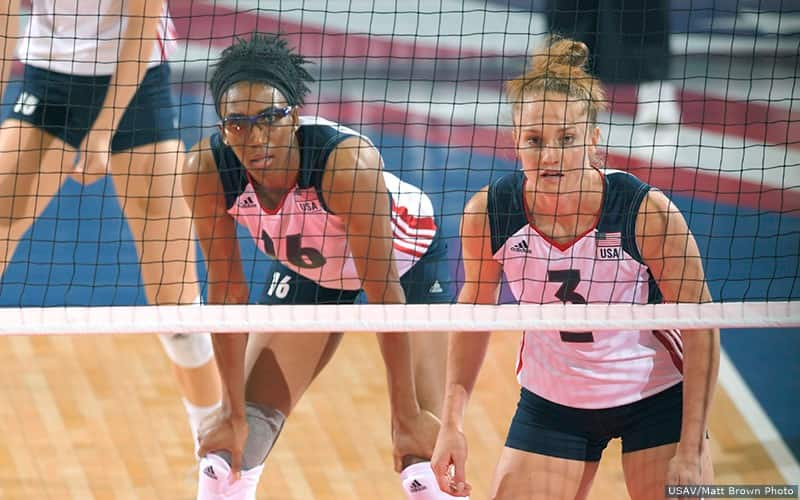
Looking for some easy tips to pass on to your players? Here are five tips from top coaches to remind you of some core techniques.
Hugh McCutcheon
Head coach, University of Minnesota, 2008 U.S. Olympic Men’s Team head coach and 2012 U.S. Olympic Women’s Team head coach
Outside hitters: Don’t worry more about the third contact than the first contact.The most important thing for outside hitters is to make sure you take care of that first contact – the pass – and then worry about what you’re going to hit and where you’re going to hit it. A lot of outside hitters are so worried about their attack that they really lose sight of their primary responsibility – taking care of the pass.
Christy Johnson-Lynch
Head coach, Iowa State University women’s team
Don’t reach out for the ball or drift out when blocking. You have to fight your instincts on this one because it causes two problems:
- By reaching out instead of penetrating, you create an easy target for an attacker to use or tool;
- It also creates a split in the block, making it tougher for the defense to read and play behind, and easier for an attacker to bury the ball in the middle of the court.
Instead, focus on a disciplined block that presses over and toward the center of the court. This type of block funnels the ball to the defenders and will be much more effective in actually blocking the ball.
John Dunning
Former head coach (retired), Stanford University women’s team
When attacking, don’t be generic with your approach or with the way you set up to hit the ball. Attackers find themselves in all kinds of offensive situations. If you’re an outside hitter, you might get 50 percent of your sets exactly where you want them and 50 percent that are high, low, wide, tight, etc. You won’t have enough time or energy to practice for every possible situation.
But every set is an opportunity. The steps to success are to read the situation, adjust your approach and choose your setup. Practicing with a focus on these things will not only improve your performance, it will help you stay healthy.
Mary Wise
Head coach, University of Florida women’s team
Don’t take a bad swing on a bad set. Less-than-great sets are going to happen, and they’re usually the result of a not-so-great first contact.
On that type of set, no matter when it occurs in the match, the hitter should try to “better the ball.” Taking a swing that has no chance of staying in play, let alone being killed, only ends the rally … with a point to the opponent.
It’s better to keep the ball in play and work harder to give your setter a decent first contact as the rally continues.
Todd Rogers
Head beach coach, Cal Poly; 2008 Olympic beach gold medalist
Don’t ever be NOT ready to play. You are in complete control of getting yourself mentally and physically prepared for a match, whether it’s following a certain warm-up routine, stretching, sprinting, visualizing, hitting a bunch of balls – whatever works for you.
So often, I see players – especially young players – who are not ready to play. Maybe they’re screwing around with their friends, or whatever it might be, but they come to the court and they’re either mentally not there or physically not sweaty and ready. To play great volleyball, you need to be disciplined and take care of this. Be ready to compete.
Originally published in VolleyballUSA, spring 2016
